DNA reveals the past and future of coral reefs
New DNA techniques are being used to understand how coral reacted to the end of the last ice age in order to better predict how they will cope with current changes to the climate. James Cook Univer

From 2005 to 2022, the main node of the ARC Centre of Excellence for Coral Reef Studies was headquartered at James Cook University in Townsville, Queensland (Australia)
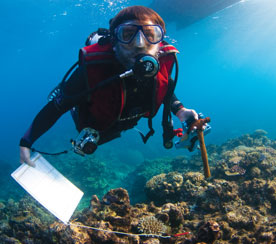
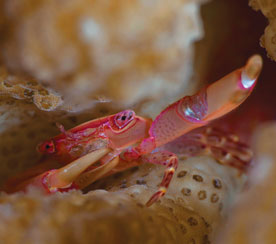
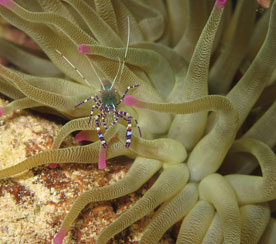
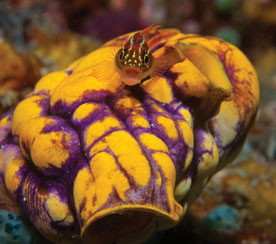
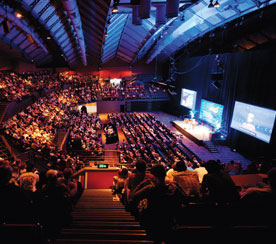
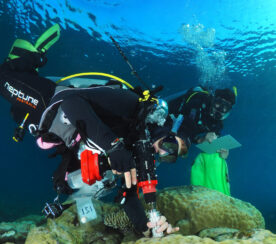
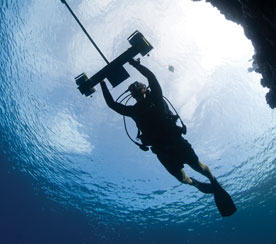
Presented by: Michael Holcomb, ARC Centre of Excellence in Coral Reef Studies, School of Earth and Environment & Oceans Institute The University of Western Australia
Abstract: Calcification, as carried out by corals, is responsible for forming the structural frame work for some of the most diverse ecosystems on earth. Despite the importance of this process for building and maintaining reefs, our understanding of calcification remains limited. I will present evidence which supports calcification being an active (energy requiring) process carried out by corals. Although calcification occurs at a site isolated from the external environment, its dependence on external environmental conditions varies widely study to study, and even between conditions within a given study. Using a simple box model and constraints from abiogenic aragonite growth I will attempt to explain how energy investment and tissue permeability may explain much of the range of observed responses of calcification to environmental variables, with a focus on ocean acidification.
Biography: Michael obtained a BS in Biology and Chemistry from the University of Idaho in 2004, where he worked on reproductive biology in fish. Michael completed his PhD in 2010 in the MIT/WHOI Joint Program in oceanography working on biomineralization in corals. He went on to a postdoc at the Centre Scientifique de Monaco where he worked on the energetics of coral calcification, and has recently started a postdoc at the University of Western Australia where he is working on the boron isotope pH proxy in corals.
Presented by: Zhenlin Zhang, ARC Centre of Excellence in Coral Reef Studies, School of Earth and Environment & Oceans Institute The University of Western Australia
Abstract: We investigate the combined effect of hydrodynamic forcing and biogeochemical processes on the distribution of nutrients, benthic nutrient fluxes and alkalinities across a shallow-water fringing coral reef system. A new benthic biogeochemical module was first developed using relationships from the coral reef literature relating convective nutrient mass transfer velocities to total bottom drag and integrated it in a coupled three-dimensional numerical ocean circulation model (ROMS) and numerical spectral wave model (SWAN). The coupled model showed high spatial variation in nutrient concentration and successfully reproduced the nutrient concentration across a section of Ningaloo Reef at Sandy Bay. The coupled physical-biogeochemical model was further extended to investigate the system-scale response to reef calcification within a section of Ningaloo Reef at Coral Bay. We modelled the spatial distribution of both the residence time and the deviation in total alkalinity (TA) from offshore values of this reef-lagoon. While residence time was calculated from the hydrodynamic model alone using a conservative tracer, TA was modeled as a reactive tracer whose ‘release’ was driven by light-dependent community calcification through a relationship derived from measurements made on an adjacent reef flat. Results showed that 1) the coupled model was capable of reproducing the observed spatial variability of TA on a scale much larger than the ~100 m control volume where the calcification measurements were made; and 2) that both residence time and TA varied strongly as a function of the incident wave forcing and location within the reef lagoon system. This new modeling approach provides a framework for accurately estimating nutrient uptake and calcification rates across entire reef systems based on observed gradients in nutrient and TA within a coral reef system, thus providing a new powerful tool for coral reef research and monitoring.
Biography: Dr. Zhenlin Zhang completed her PhD degree in oceanography at the University of Western Australia in 2011. Her current research focuses on developing spatial-explicit biogeochemical models in coral reef systems and investigating how the physical and pelagic biogeochemical processes offshore influence nutrient dynamics and water chemistry within coral reef systems nearshore.
New DNA techniques are being used to understand how coral reacted to the end of the last ice age in order to better predict how they will cope with current changes to the climate. James Cook Univer
A new study on the effects of climate change in five tropical countries has found fisheries are in more trouble than agriculture, and poor people are in the most danger. Distinguished Profess
James Cook University researchers have found brightly coloured fish are becoming increasingly rare as coral declines, with the phenomenon likely to get worse in the future. Christopher Hemingson, a
Researchers working with stakeholders in the Great Barrier Reef region have come up with ideas on how groups responsible for looking after the reef can operate more effectively when the next bleaching
Abstract: As marine species adapt to climate change, their heat tolerance will likely be under strong selection. Individual variation in heat tolerance and its heritability underpin the potential fo
Abstract: The Reef Ecology Lab in KAUST’s Red Sea Research Center explores many aspects of movement ecology of marine organisms, ranging from adult migrations to intergenerational larval dispersal
Abstract: Macroalgal meadows are a prominent, yet often maligned component of the tropical seascape. Our work at Ningaloo reef in WA demonstrate that canopy forming macroalgae provide habitat for ad
Abstract: Sharks are generally perceived as strong and fearsome animals. With fossils dating back at least 420 million years, sharks are not only majestic top predators but they also outlived dinosa
Abstract: Connectivity plays a vital role in many ecosystems through its effects on fundamental ecological and evolutionary processes. Its consequences for populations and metapopulations have been
Abstract: Evolution of many eukaryotic organisms is affected by interactions with microbes. Microbial symbioses can ultimately reflect host’s diet, habitat range, and even body shape. However, how
Abstract: The past few years have seen unprecedented coral bleaching and mortality on the Great Barrier Reef (GBR) but the consequences of this on biodiversity are not yet known. This talk will expl